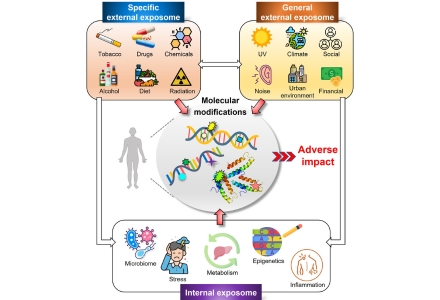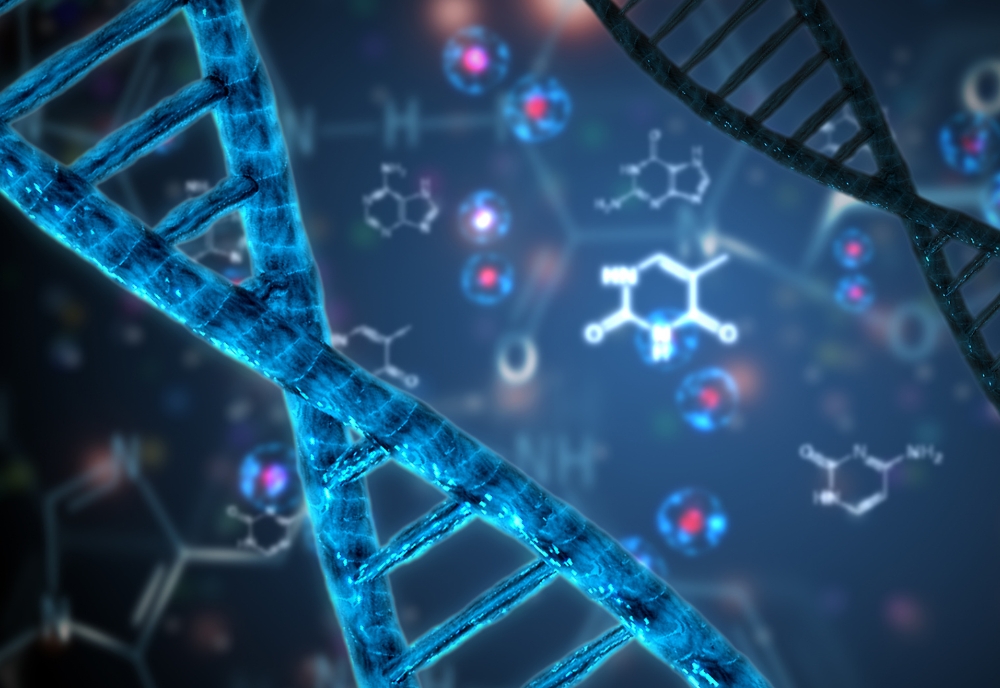Ninety percent of the risk of developing a disease comes from exposure to certain elements in our environment, such as pollution, sunlight, tobacco use, or food components, according to USF College of Arts and Sciences professor and Department of Molecular Biosciences chair Dr. Marcus Cooke.
“The environment in which we live is a complex mixture of agents and processes to which we are exposed throughout our life,” he said. “This is called the exposome. Damage to nucleic acids is linked to the development of disease, and many agents in the environment cause damage to nucleic acids.”
Even the normal cell processes within our bodies can damage our nucleic acids, Cooke explained, which include DNA, RNA, and their precursors, forming what are known as “adducts.”
“Nucleic acids act as the machine code and messengers which instruct the cell on what to do,” Cooke said. “Damage to them can have detrimental repercussions for the cell and is implicated in the cause of disease. DNA ‘adductomics’ aims to detect the totality of DNA adducts present in a cell, and is an invaluable approach to better assess the health impact of the environmental agents to which we are exposed, across the lifespan, and thereby aid in determining cancer risk.”
Building on their pioneering National Institute of Environmental Health Sciences-funded work with DNA adductomics to examine all adducts present in the DNA simultaneously, Cooke and Dr. Chiung-Wen Hu and Mu-Rong Chao from Chung Shan Medical University in Taiwan, recently demonstrated the ability to perform nucleic acid adductomics to provide the most comprehensive view of adducts formed by the exposome.
Their groundbreaking research, “Nucleic acid adductomics – The next generation of adductomics towards assessing environmental health risks,” has been published in the Science of the Total Environment.
Cooke says that he and his research colleagues are the first to develop a method to detect the widest variety of both DNA and RNA adducts in cells and urine, to non-invasively assess the body burden of nucleic acid adducts.
“Detecting these adducts in urine makes the assay non-invasive, and so much more useful in human studies,” Cooke said. “Up until now, adductomics focused mainly on small DNA adducts, and excluded RNA adducts, of which there are many, and we’re only beginning to understand the potential role of RNA adducts in disease. We’d previously developed an adductomics assay for looking at DNA-DNA crosslinks, called crosslinkomics. However, no single assay integrated the ability to detect all of these adducts in a single assay run. In the present work, we developed a method to study the most comprehensive range of DNA and RNA adducts to date. Not only does this assay work on cellular DNA/RNA, but it can also detect these adducts in urine.”
Their work provides an estimate of the total number of different nucleic acid adducts present in urine, totaling over 1000; and identifies the presence of novel types of adducts, including ‘hybrid’ adducts comprised of both DNA and RNA moieties (DNA-RNA crosslinks), together with RNA-RNA crosslinks, and RNA-protein crosslinks, Cooke explained.

Illustration of molecular modifications (Graphic courtesy of Dr. Marcus Cooke).
“This is a major advance in the study of adducts,” Cooke said. “We used to just measure one or a few adducts at a time, but now we know that there are about 1000, we’re clearly missing information when we only measure a few. This approach will allow us to better understand the mechanistic relationships between exposure, nucleic acid damage, repair of nucleic acids, and disease.”
With cellular and urinary DNA adductomics established at USF, Cooke says work is now underway to add nucleic acid adductomics to their repertoire of routine assays for integration with the numerous efforts to tackle human disease in the Department of Molecular Biosciences, and across USF, in conjunction with Moffitt Cancer Center.
They are also expanding upon this research and have developed a novel software to analyze the complex datasets generated by nucleic acid adductomics and are applying this assay to various model systems and humans to gain a sense of what a normal adduct burden is.
Cooke said he hopes that this assay will help address a major public health challenge – “the identification of agents in the exposome carry a risk of causing disease, so we can mitigate this risk.”
